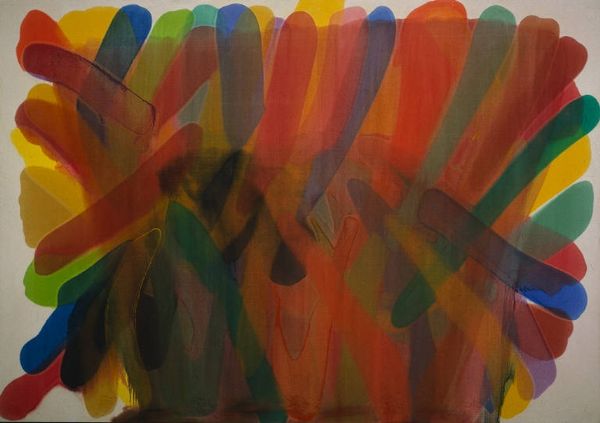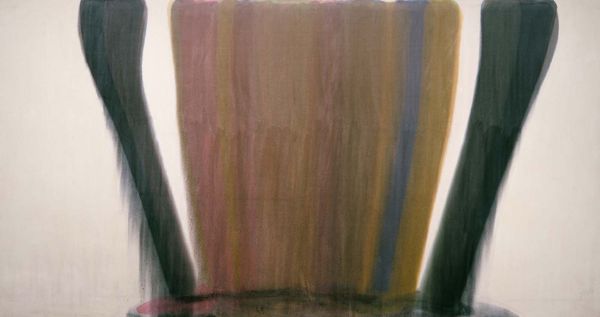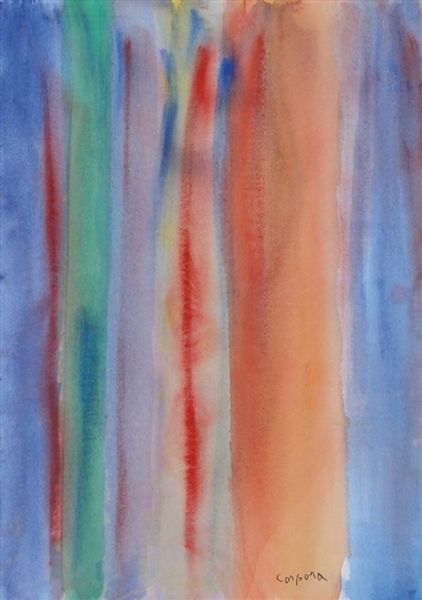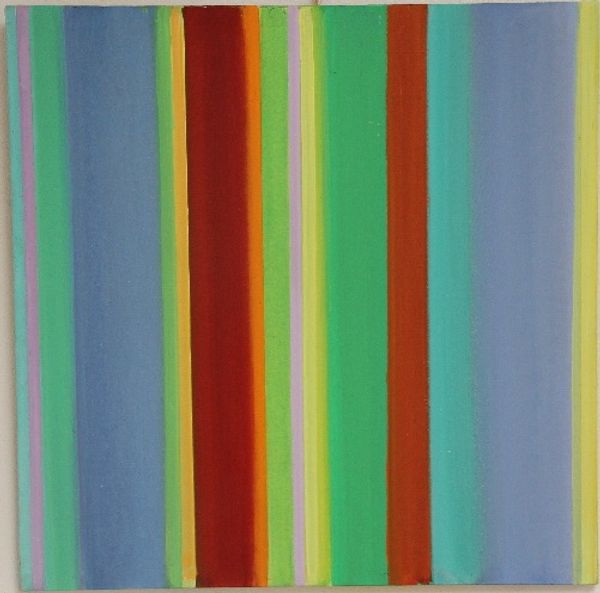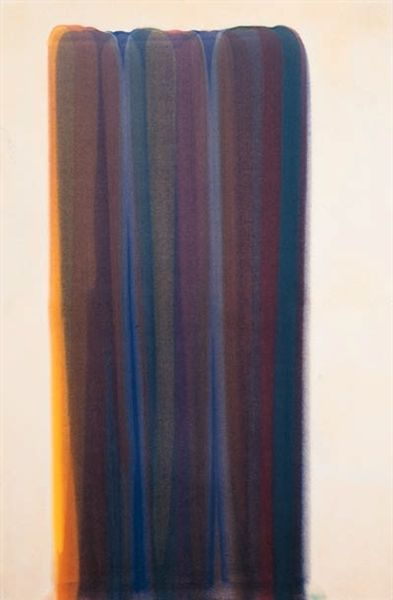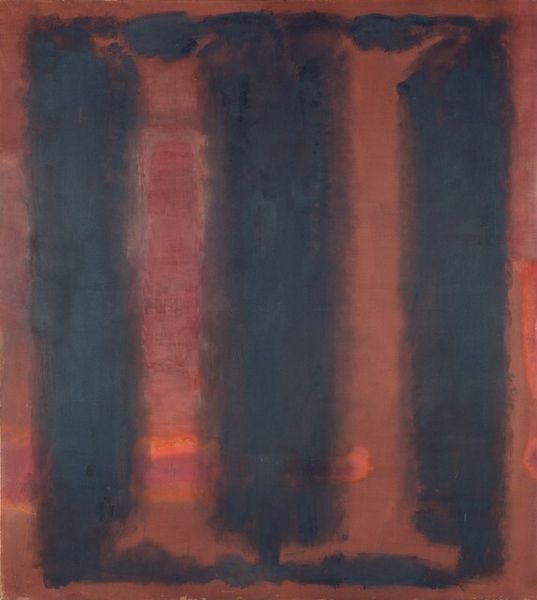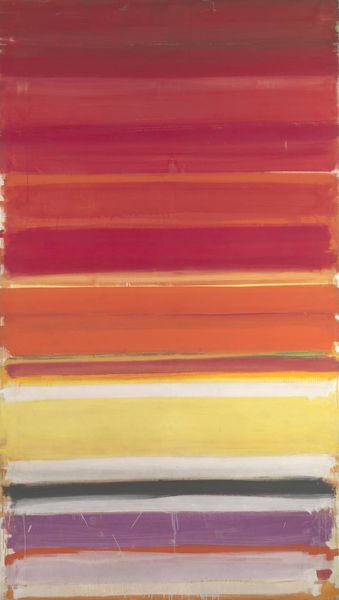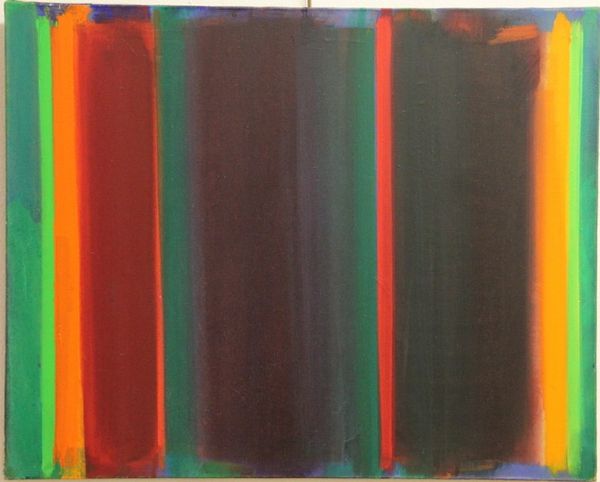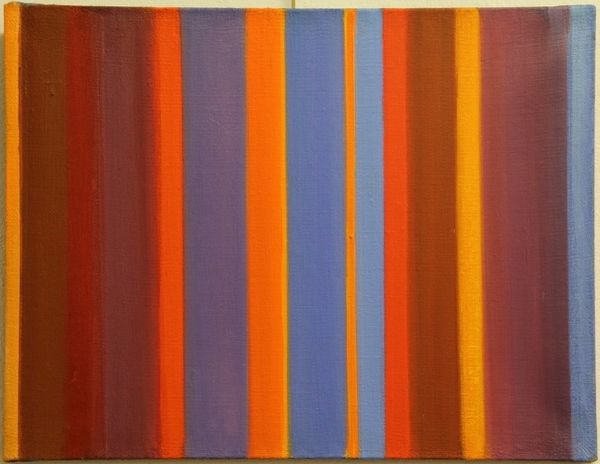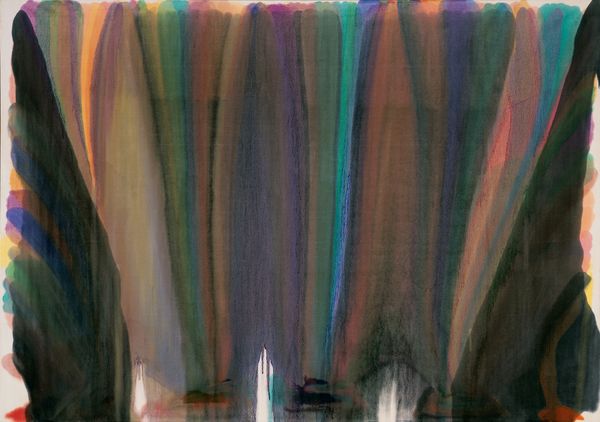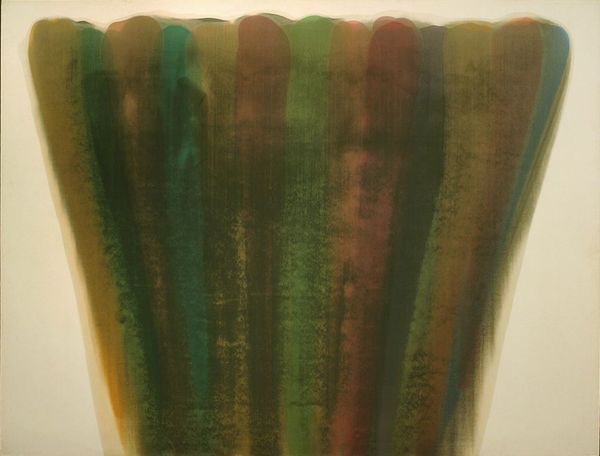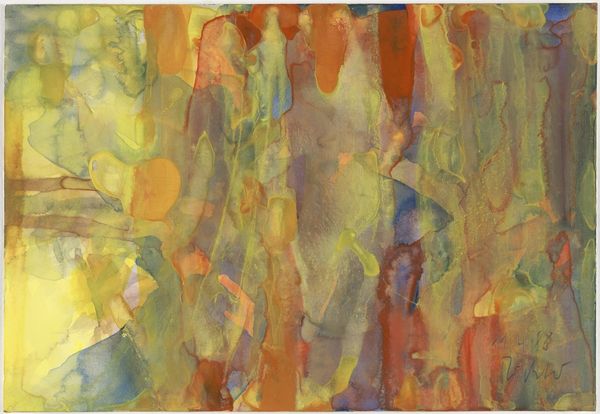
stain, acrylic-paint
#
abstract-expressionism
#
washington-colour-school
#
abstract expressionism
#
abstract painting
#
stain
#
colour-field-painting
#
acrylic-paint
#
acrylic on canvas
#
abstraction
#
watercolor
Dimensions: 256.9 x 378.5 cm
Copyright: Morris Louis,Fair Use
Editor: So here we have Morris Louis' "Saraband" from 1959. It's acrylic paint, I believe he used the stain technique, on canvas. It gives me the feeling of looking into a colourful, slightly melancholic abyss. All those dripping colors... almost like tears? What do you make of it? Curator: Tears, you say? That resonates. For me, "Saraband" hums with the quiet intensity of withheld emotion. Think about it – this was painted during the height of Abstract Expressionism, a movement known for its bravado, its large scale and supposed 'masculinity.' But Louis, and others like Helen Frankenthaler, were finding a different path, one that prioritized color and feeling over grand gestures. Editor: So, a bit of a rebellion then? Curator: Perhaps a quiet subversion. The way the colors stain the canvas, bleed into each other, it's so intimate, so…vulnerable. Saraband is a stately dance; this painting hints at elegance, melancholy. It isn't shouting; it's whispering secrets, wouldn’t you agree? Editor: It's like the colors are having their own conversation, independent of any figures or objects. Curator: Precisely. And by diluting the paint and pouring it onto the canvas, Louis removed his hand, his ego, from the process. It’s as though the painting is creating itself, guided only by the properties of the paint and canvas. What do you think that means? Editor: Maybe that art can exist without forcing it... that sometimes the best thing is to just let the materials speak for themselves. That's pretty profound when you consider how much we idolize the 'artist' as a person. Curator: Absolutely. It makes you wonder about the line between intention and accident, doesn’t it? Editor: Definitely. I initially saw sadness, but now I see the peaceful surrender to a natural process. Thanks for sharing this, it will give me a whole different viewpoint now. Curator: My pleasure. It’s in letting art speak for itself that we start to truly hear it, don’t you think?
Comments
No comments
Be the first to comment and join the conversation on the ultimate creative platform.
